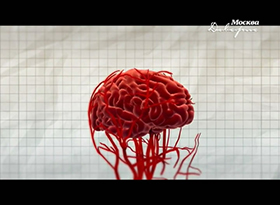ПУБЛИКАЦИИ
Infection Risk in Neurointervention and Cerebral Angiography
- Создано 21.02.2013 13:05
BACKGROUND: The risk of infection with cerebral angiography and neurointerventional procedures has not been defined. Likewise, although the use of routine prophylactic antibiotics has been advocated by some neurointerventionalists, the utility of prophylactic antibiotics in this setting has not been determined.
OBJECTIVE: To determine the rate of infection associated with neuroangiographic procedures in a clinical setting in which prophylactic antibiotics are not routinely given.
METHODS: All cerebral angiograms and neurointerventional procedures done by a single neurointerventionalist over a recent 7-year period were retrospectively reviewed. Patients with infections directly attributable to the procedure were identified. A sample size calculation was done to determine the necessary size of a randomized, controlled trial aimed at determining whether prophylactic antibiotics can lower the rate of infection.
RESULTS: Among a total of 2918 cerebral angiograms and neurointerventional procedures done without prophylactic antibiotics, there were 3 infections (0.1%) attributable to the procedure. All infections were localized femoral artery infections with no systemic complications. One infection occurred in a patient who was immunosuppressed because of treatment for cancer. Two of the patients required surgical debridement; all were treated with intravenous antibiotics with resolution of all infections. There were no central nervous system infections and no deaths associated with the infections.
CONCLUSION: These data suggest that the overall risk of infection associated with most neuroangiographic procedures is very low. Prophylactic antibiotic use may be a reasonable option for selected patients but is probably unnecessary for standard use in the context of meticulous care during procedures.
- Удаление каверномы глубинных отделов правого полушария
- Клипирование de novo образованной аневризмы левой СМА
- Клипирование крупной частично тромбированной аневризмы
- Удаление каверномы в сочетании с амигдало-гиппокампэктомией
- Иссечение АВМ после частичной эмболизации композицией onyx
- Клипирование гигантской аневризмы СМА с применением методики ВАК





